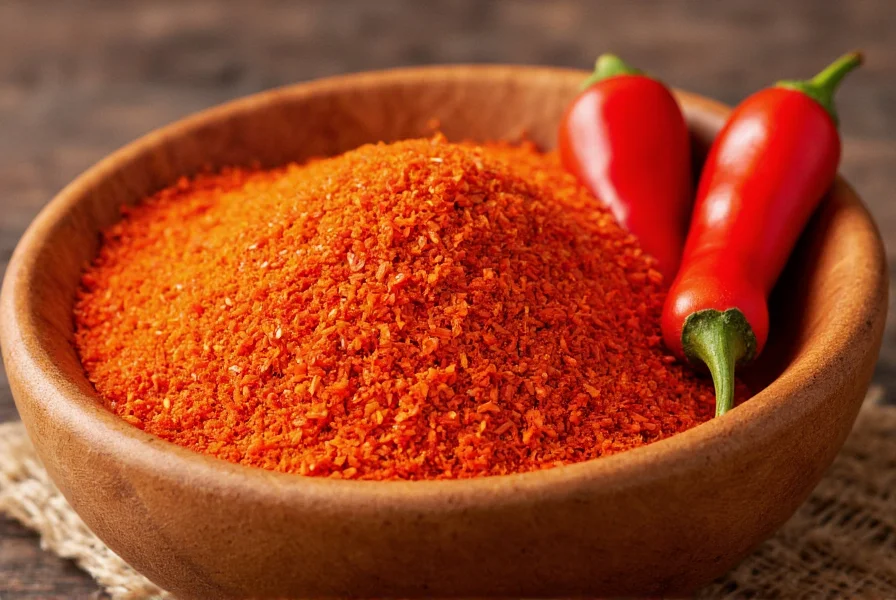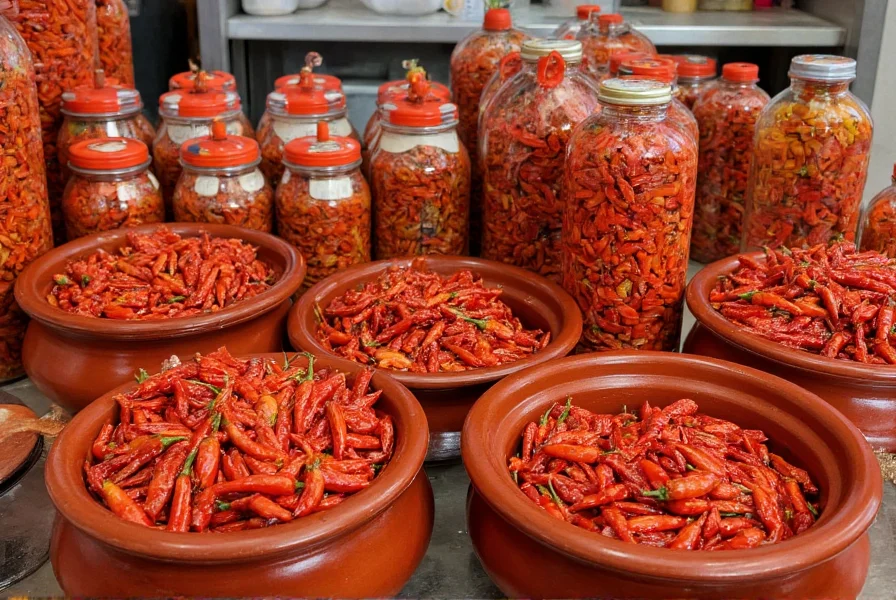When searching for 'koreansk chili,' you're likely looking for information about traditional Korean chili varieties used in dishes like kimchi, bibimbap, and tteokbokki. This comprehensive guide covers everything you need to know about authentic Korean chili products, their unique characteristics, and how to use them in your cooking.
Understanding Korean Chili Varieties
Korean cuisine features several distinctive chili products that form the backbone of many traditional dishes. Unlike Thai or Mexican chilies, Korean varieties offer a unique balance of sweetness, umami, and moderate heat that defines much of Korea's culinary identity.
Gochugaru: The Heart of Korean Cooking
Gochugaru (고춧가루), or Korean red pepper flakes, represents the most essential Korean chili product. Made from sun-dried Korean chili peppers, this vibrant red powder comes in two varieties:
| Type | Grind Size | Heat Level (Scoville) | Primary Uses |
|---|---|---|---|
| Fine Gochugaru | Fine powder | 4,000-8,000 SHU | Kimchi, marinades, sauces |
| Rough Gochugaru | Coarse flakes | 4,000-8,000 SHU | Stews, braises, texture-focused dishes |
Unlike cayenne or other chili powders, authentic gochugaru delivers a complex flavor profile with subtle sweetness and smokiness. The heat level sits around 4,000-8,000 Scoville Heat Units (SHU), making it milder than cayenne (30,000-50,000 SHU) but hotter than paprika (500-1,000 SHU).

Gochujang: The Fermented Flavor Booster
Gochujang (고추장) represents Korea's iconic fermented chili paste, combining gochugaru with glutinous rice, fermented soybeans, and sweeteners. This thick, sticky paste delivers:
- Deep umami from fermentation
- Complex sweet-heat balance
- Thick, spreadable consistency
- Approximately 1,500-2,000 SHU (milder than gochugaru)
Chefs use gochujang as a base for sauces, marinades, and dipping condiments. Its versatility makes it perfect for Korean chili paste substitutes in non-traditional recipes when authentic ingredients aren't available.
Authentic Korean Chili Peppers vs. Substitutes
Fresh Korean chili peppers (cheongyang gochu) typically measure 2,500-4,000 SHU. When authentic Korean chilies aren't available, consider these substitutions:
- For gochugaru: Mix 1 part cayenne with 2 parts sweet paprika plus a pinch of garlic powder
- For gochujang: Blend 2 parts miso paste with 1 part harissa and 1 teaspoon sugar
- For fresh peppers: Use Fresno peppers or a mix of jalapeño and bell pepper
Remember that finding authentic Korean chili products near me often requires visiting Asian grocery stores or reputable online retailers specializing in Korean ingredients.
Proper Storage of Korean Chili Products
To maintain freshness and flavor:
- Store unopened gochugaru in a cool, dark place for up to 2 years
- Refrigerate opened gochugaru for 6-12 months
- Keep gochujang refrigerated at all times after opening (up to 18 months)
- Freeze fresh Korean chili peppers for up to 1 year

Culinary Applications of Korean Chili Products
Korean chilies feature prominently in these traditional applications:
- Kimchi preparation: Gochugaru provides color and flavor without overwhelming heat
- Tteokbokki sauce: Gochujang creates the signature sweet-spicy base
- Bulgogi marinade: Adds depth to the sweet-savory profile
- Stews and soups: Provides warmth without excessive spiciness
Modern chefs increasingly incorporate Korean chili products into fusion recipes with Korean chili paste, creating innovative dishes that blend traditional Korean flavors with global cuisines.
Where to Find Authentic Korean Chili Products
For genuine Korean chili ingredients:
- Visit Korean or Asian grocery stores for the freshest selection
- Look for brands like Chung Jung One, Haechandle, or Mother's Recipe
- Check the ingredient list for minimal components (peppers, salt, maybe glutinous rice)
- Avoid products with artificial colors, preservatives, or excessive sweeteners
When searching for best Korean chili powder brands, prioritize products imported directly from Korea with clear labeling of heat level and processing method.
Frequently Asked Questions
What's the difference between gochugaru and regular chili powder?
Gochugaru has a distinctive sweet-heat profile with subtle smokiness and moderate spiciness (4,000-8,000 SHU), while regular chili powder varies widely but often contains additional spices like cumin and oregano. Authentic gochugaru contains only Korean chili peppers, whereas American chili powder typically blends multiple chili varieties with other spices.
Can I substitute gochujang with sriracha?
While both are chili-based condiments, they have very different flavor profiles. Sriracha is garlic-forward with vinegar tang, while gochujang offers fermented umami with sweet notes. For Korean recipes, a better substitute would be mixing miso paste with a mild chili paste and a touch of sugar to approximate gochujang's complex flavor.
How spicy are Korean chili peppers compared to jalapeños?
Fresh Korean chili peppers (cheongyang gochu) typically measure 2,500-4,000 Scoville Heat Units, making them milder than jalapeños (2,500-8,000 SHU). The heat in Korean cuisine comes more from the concentrated gochugaru powder rather than fresh peppers, allowing for complex flavor development without overwhelming spiciness.
Why does my gochujang taste different from restaurant versions?
Commercial gochujang varies significantly in quality and authenticity. Restaurant-quality gochujang typically uses higher-quality ingredients and traditional fermentation methods. Look for products with minimal ingredients (chili powder, glutinous rice, fermented soybeans, salt, and sweetener) and avoid those with artificial additives or excessive sugar.
Can I make gochugaru at home?
While challenging to replicate authentic gochugaru at home, you can create a reasonable substitute by drying Korean chili peppers (or suitable alternatives like Fresno peppers) in a food dehydrator, then grinding them into fine or coarse flakes. The key is using peppers with the right sweet-heat balance and ensuring proper drying to develop the characteristic flavor.











 浙公网安备
33010002000092号
浙公网安备
33010002000092号 浙B2-20120091-4
浙B2-20120091-4